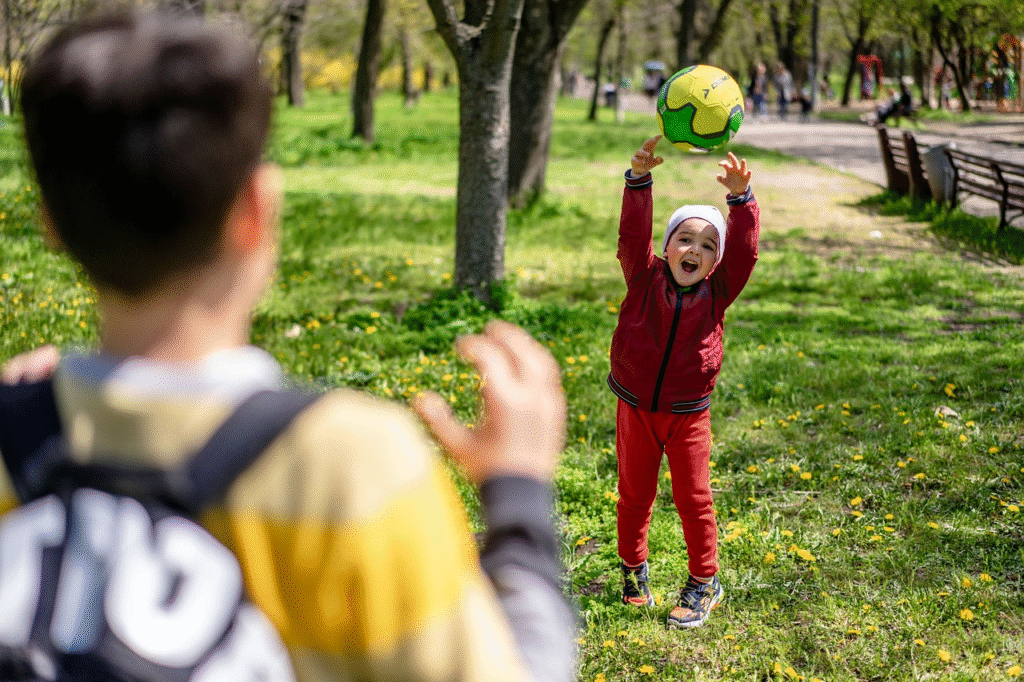1. The present continuous tense (also called present progressive tense) describes actions that are happening right now. So it’s temporary
यो present continuous tense ले अहिले भइरहेको कार्य वा अस्थायी अवस्थालाई जनाउँछ।
I’m working a bank. (temporary)
म हाल बैंकमा काम गर्दैछु। (यो अस्थायी हो; सायद केही समयको लागि मात्र)
I am staying with my cousin this month. (temporary)
म यो महिनामा मेरो दाजु/भाइसँग बस्दैछु।
We are using a rental car until ours gets repaired. (temporary)
हाम्रो कार मर्मत नभएसम्म हामी भाडाको कार प्रयोग गर्दैछौं।
2. In English we do not use stative verbs in continuous tenses
English मा हामी साधारणतया ‘stative verbs’ लाई continuous tenses (जस्तै: present continuous) मा प्रयोग गर्दैनौं।
stative verbs : agree, believe, love, like, hate, prefer, want, see, hear, taste, smell
I’m liking mangos.
I’m not beliving in stories.
I am seeing the bird.
This soup is tasting great.
3. The present continuous tense is often used to express annoyance or complaints about repeated actions, especially when combined with adverbs like “always,” “constantly,” or “forever.”
दोहोरिने कार्यहरूप्रति गुनासो व्यक्त गर्न present continuous tense प्रयोग गरिन्छ, विशेष गरी “always,” “constantly,” “forever” जस्ता क्रियाविशेषणहरूसँग।
He is always leaving dirty cups on the table.
उ सधैं टेबलमा फोहोर कपहरू छोडिरहन्छ।
They are forever arriving late to work.
उनीहरू सधैं काममा ढिलो आउँछन्।
You are always forgetting your keys.
तिमी सधैं आफ्नो चाबी बिर्सिरहन्छौ।
He is forever misplacing his phone.
उ सधैं आफ्नो फोन हराइरहन्छ।
Note :
He is always arriving on time.
This construction indicates a regular habit. in this case you need to use a present simple
He always arrives on time. (present simple )
4. The present continuous tense is commonly used to describe future arrangements/plans
present continuous tense भविष्यका निश्चित योजना वा व्यवस्था व्यक्त गर्न प्रयोग गरिन्छ।
They’re flying to France next Sunday.
उनीहरू अर्को आइतबार फ्रान्स उड्दै छन्।
(Tickets are booked; the plan is set.)
We’re having dinner with our parents this week
हामी यस हप्ता हाम्रा आमाबुबासँग खाना खाँदैछौं।
(The arrangement has been made.)
I’m visiting my grandmother next week.
म अर्को हप्ता मेरी हजुरआमालाई भेट्न जाँदैछु।
(The visit is scheduled and confirmed.)
5. The present continuous tense is used to describe an action that is ongoing or happening something not exactly at this moment, but during the current time period
This is what I’m focusing on these days.
हालका दिनहरूमा म यही कुरामा केन्द्रित छु।
I’m taking care of this at the moment.
म अहिले यो व्यवस्थापन गरिरहेको छु।
I’m busy with this lately.
अहिले म यो कुरामा व्यस्त छु।
6. Present continuous negatives
Structure:
Subject + am/is/are + not + verb+ing
She is not coming to the party.
उनी पार्टीमा आउँदै छैनन्।
They are not playing game.
उनीहरू खेल खेल्दै छैनन्।
We are not studying right now.
हामी अहिले पढ्दै छैनौं।
6. We use the present continuous tense to describe actions in a photo.
Children are playing in the park.

7. Present Continuous for Changing Situations
We use the present continuous tense to describe situations that are in the process of changing, developing at the present moment.
हामी वर्तमान निरन्तर काल प्रयोग गर्छौं जब केहि स्थिति अहिलेको समयमा परिवर्तन हुँदैछ वा विकास भइरहेका छन्।
She is learning how to drive.
उनी गाडी चलाउन सिक्दैछिन्।
(She is in the middle of the process of learning.)
The population is growing rapidly.
(जनसंख्या तीव्र गतिमा बढिरहेको छ।)
She is getting better at playing the guitar.
(उनी गिटार बजाउनमा सुधार गर्दैछिन्।)
The weather is improving.
(मौसम सुधार हुँदैछ।)
